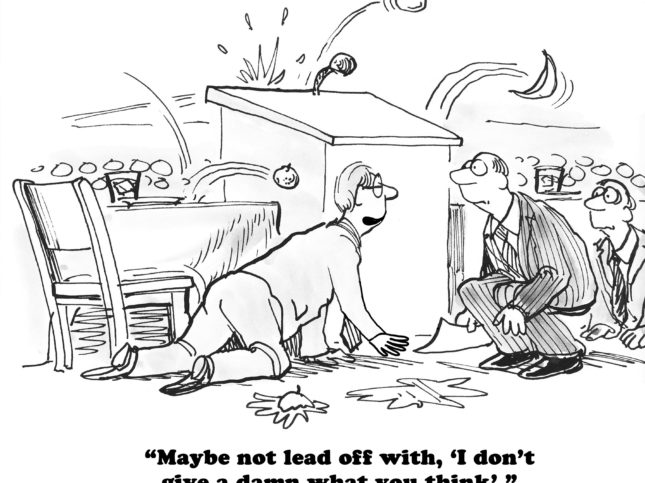PE 11: Decisions Aren’t Exactly Rational
Podcast: Play in new window | Download
As we saw in the last episode, “Rational Randy” holds the title of decision maker, but he usually defers at least in part to “Aileen”, who leans in ways that may seem irrational but are at least predictable.
Here are three important tendencies that can skew the decisions we make:
First, we hate losing more than we like winning. In other words, losses outweigh gains in our minds. For example, the majority of people won’t take a one-time bet in which they have an even chance of losing $100 or winning $150. This tendency toward “loss aversion” means that we prefer sure things when it comes to gains but we’re willing to gamble to avoid losses, as illustrated by the following choice:
A: 50% chance to win $1,000
B: Sure $500
84% chose B
C: 50% chance to lose $1,000
D: Sure loss of $500
70% chose C
Second, where we end up depends on where we begin. It’s called anchoring: the first information we hear has an inordinate effect on subsequent information. As related by Dan Ariely in his book, Predictably Irrational, an audience is first asked to write the last 2 digits of their social security number, and, second, to submit bids on items such as wine and chocolate. The half of the audience with higher two-digit numbers would submit bids that were between 60 percent and 120 percent more. The simple act of thinking of the first number strongly influences the second, even though there is no logical connection between them.
Third, nothing makes sense except in comparison to something else. If you put your left hand in a bucket of cold water and your right into a bucket of hot water, and then plunge them both into a bucket of room-temperature water, your left will suddenly feel warm and your right will feel cold. It’s the same with numbers or ideas, and good persuaders know how to choose the comparison to improve the appeal of their proposal.
So What?
To influence “Aileen”, persuaders need to learn to go with the grain of her tendencies. Here are five suggested ways:
- Sell the problem, not the solution. At least early in the process, it’s important to ask questions and direct the conversation to the costs and consequences of not acting.
- Choose the reference point. No one likes to pay a penalty for using a credit card, but they will gladly take a discount for cash. How you describe the choice matters.
- Make the most extreme initial offer you can reasonably support. Although people will adjust from this anchor, they usually under-correct.
- Choose the comparison. This will put your idea in the best possible light.
- Narrow the choices. More choices lead to fewer decisions. One effective tactic is to place your proposal in the middle of three alternatives.
If you want to learn more about this fascinating topic, here are three books I strongly recommend:
Thinking, Fast and Slow, by Daniel Kahneman
Predictably Irrational, by Dan Ariely
Priceless: The Myth of Fair Value, by William Poundstone






